When you hear the word “Atlas,” you might think of the ancient Greek giant holding the world on his shoulders.
The software company Atlassian certainly lives up to its namesake as an enterprise with 12 products, 2,200 employees, and 90,000 customers.
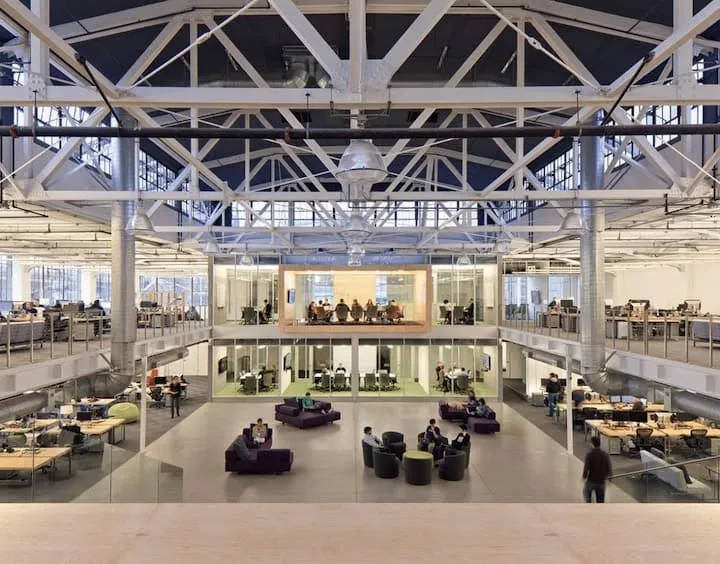
Atlassian San Francisco office.
Creating a design team to support that scale is no easy feat. Add to that the complexities a B2B company faces, and you begin to truly appreciate the full scope of the challenge.
Atlassian, however, is breaking the mold of the engineering-driven B2B company. To explore how they’ve built a thriving design culture and practice, we spoke to three members of their design organization:
- Karen Cross, Head of Design – Go-to-Market & Ecosystem
- Amanda Sampson, Senior Recruiter, Design
- Liam Greig, Design Manager – Confluence
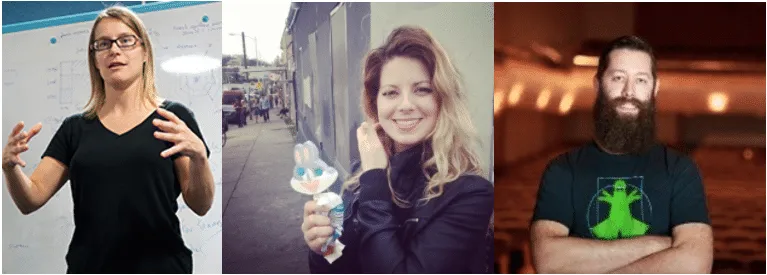
Karen Cross,Amanda Sampson, Liam Greig.
They revealed the secrets of their success in finding, hiring, and nurturing the right designers from all around the world.
The Right Team Size and Structure
Back in 2012, the design practice at Atlassian was just a handful of folks. Design coherence was lacking – for example, there were 48 different kinds of dropdown menus alone. Recognizing the competitive advantage of well-designed business products, Atlassian started building its design practice.

Liam Greig (center) during a design feedback session.
First among those hires was Jürgen Spangl, the current Head of Design. His emphasis on a coherent user experience paid off, and in the years since, their firm grew in both the number of personnel and the maturity of their process. Now, with almost 200 people in the design organization and a powerful design system, Atlassian Design is on track to grow by another 20-30 hires through 2018.
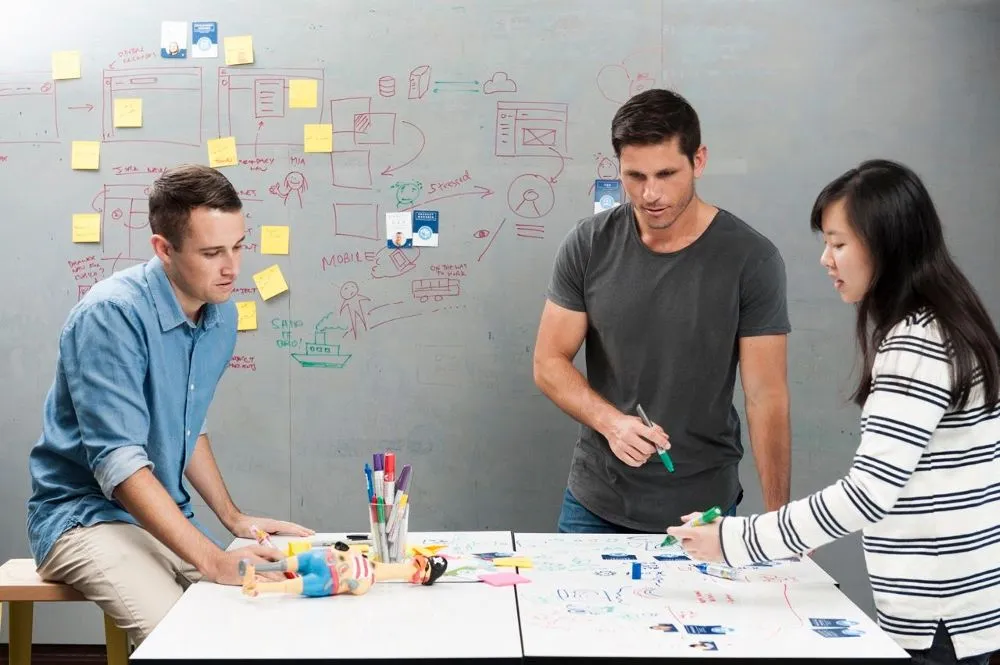
Whiteboarding session in Atlassian Sydney’s design space.
“We’re not just trying to grow a design team arbitrarily,” says Liam. “We’re growing our design team so that it complements product management and engineering.”
The design organization at Atlassian currently spans five disciplines:
- Information experience – Crafting the product content, interface copy, technical documentation
- User research – Researching and validating user needs
- Product design – Product improvements and new product development
- Creative team – Creating interactive marketing projects
- Design operations – Putting in place the right tools, processes, and vision to make design teams successful
And when it comes to maintaining harmony in the product triad, Atlassian uses this ratio as a guideline:
1 designer : 1 product manager : 10 developers
Of course, the ratio isn’t written in stone – it flexes based on the project and skills of team members.
Generalists vs. Specialists: Enter the Design Skills Matrix
Instead of chasing unicorns, Atlassian hires T-shaped individuals to fulfill their five disciplines. Team members specialize in one area of design (the vertical line of the T), but can still fill in other areas (the horizontal T line).
Hiring T-shaped designers is ideal for balanced design teams with cross-functionality. The structure fits perfectly with the career development process: usually new hires work on one product for at least a year to hone their skills. From there, designers can transfer between different products.
So how do they build the profile for their T-shaped hires? Karen Cross (Head of Design for Go-to-Market and Ecosystem) has created a design skills matrix now used globally across all hiring and career development efforts:
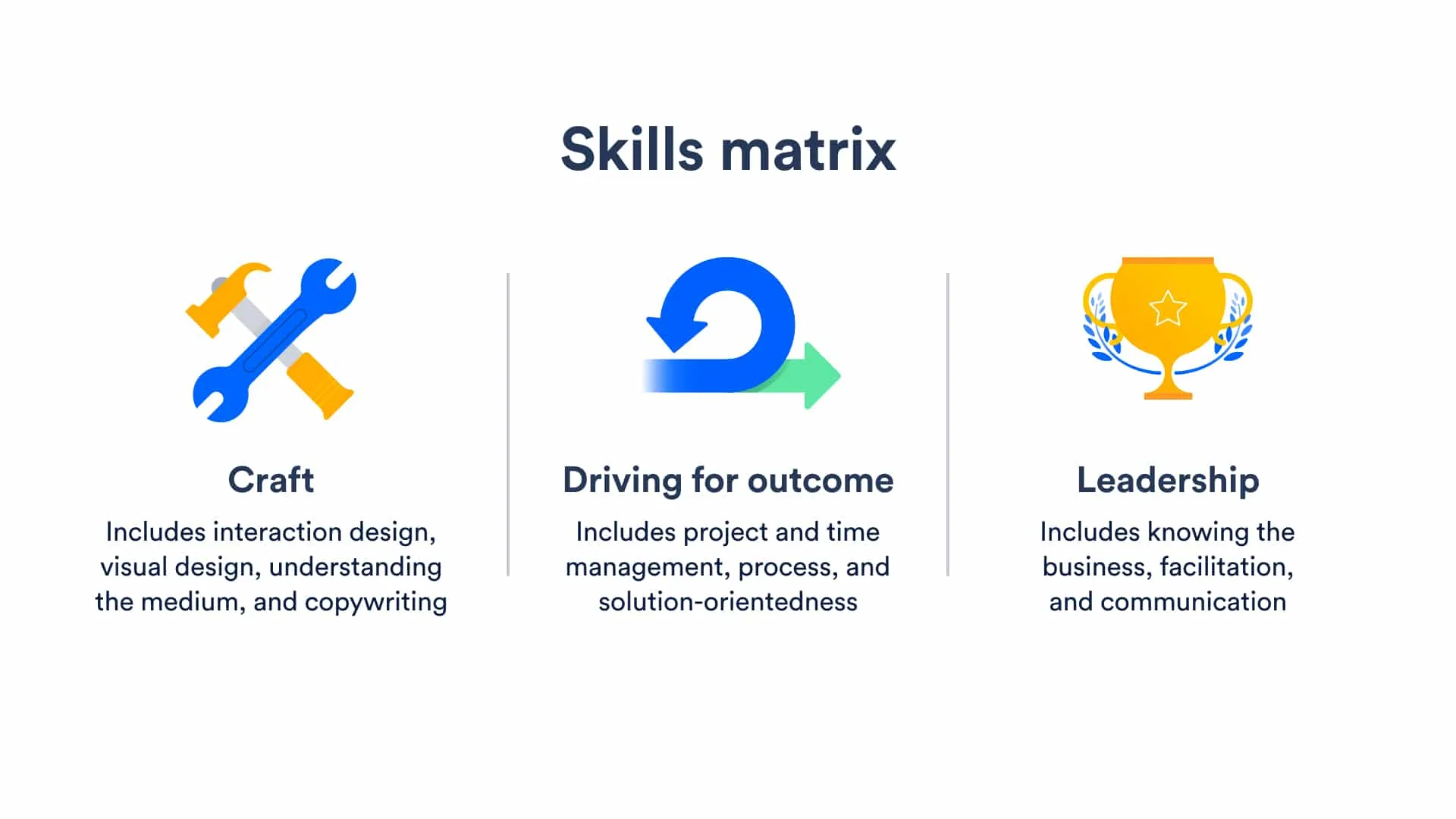
But what about coding? Where does Atlassian weigh in on the debate? Well, it all depends.
“Coding certainly doesn’t hurt, but it’s not a must-have,” says Liam Greig, Design Team Lead on Bitbucket. “Again, back to the T-shaped designer — it depends on what we’re looking for in the T-shape. More importantly, can you understand people who code?”
Amanda Sampson (Sr. Design Recruiter) agrees that different design roles require different levels of technical skill. “If we’re hiring a prototyper or growth designer, then they should be able to code. That way they can quickly design, code, and ship an experience,” says Amanda. “For most designers, we care more about how they work with developers and function within technical constraints.”
The Carefully Crafted Hiring Process
To find the right T-shaped designers, Atlassian follows a hiring process that’s anything but cookie-cutter. Instead of using the same process as engineering and product teams, the design organization created a tailored four-step process.
1. Initial evaluation
The process starts with reviewing a candidate’s resume and portfolio. According to Amanda — who’s taken classes at General Assembly to immerse herself as a recruiter in the designer mindset — a formal design education isn’t as important as how they think.
She’s particularly interested in how they solve business problems. How do they present their work? How did they understand the problem and the user group? Do they know what worked and what didn’t in their design? These talents can’t always be taught.
2. First phone conversation
Closer to a traditional screening interview, one of Atlassian’s two design recruiters spend about 20-30 minutes with a candidate. The recruiter explains the background of the role, the locations, and the expectations of the role. The candidate will also summarize their experience and expectations.
3. Virtual portfolio and experience review
At this stage, the hiring process starts diving deep.
The hiring manager (someone like Karen or Liam) and candidate speak for about 45 minutes to an hour through a video interview to explore the decisions and process behind a few projects in a candidate’s portfolio.
“Don’t just walk through features,” Liam explains. “Why did you make those decisions? Why is it a carousel? Can you link research insights to a design decision?” It’s not enough to design the right way; candidates have to understand and explain why it’s the right way.
4. Onsite interview
Candidates who pass the virtual portfolio review then get invited for a half day onsite at one of Atlassian’s global offices.
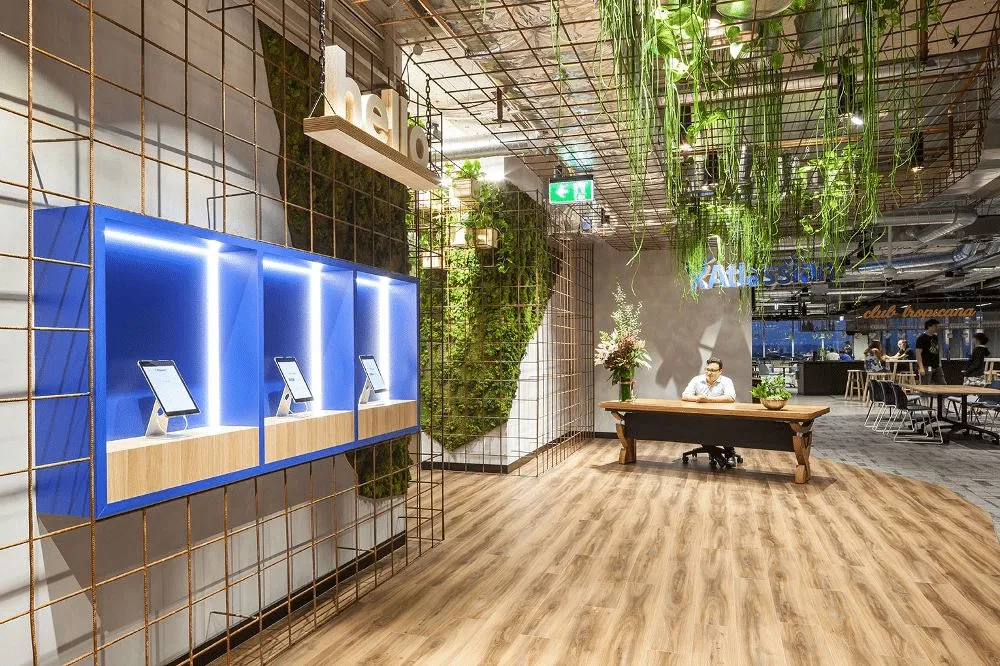
Atlassian’s Sydney office.
After a series of 1:1 conversations with other team members, the interactive design exercise begins. Lasting between 1½ to 2 hours, these fictitious exercises span two sessions that mirror the divergence and convergence of the design process:
- First session – 2-3 Atlassian employees role-play with the candidate to gauge collaboration skills (confidence, delegation, leadership style) and idea generation abilities.
- Second session – Candidates are given time alone to create a cohesive concept. The final deliverable may range from a wireframe to hi-fi mockup. When ready, the candidate will present their work to the same group from the first session.
Thanks to the alone time in the second session, the process evaluates soft and hard skills without making more introverted candidates uncomfortable. The format reflects Atlassian’s emphasis on balanced designers over unicorns.
“We’ve left the room feeling ho-hum after seeing a candidate not shine in the collaborative session, only to come back and be totally blown away by their work in the solo session” says Liam. “The format really shows all the skills of the designer and prevents us from pigeonholing people”.
Following the interactive exercise, candidates are then invited to a values interview with several employees. The goal is to assess culture fit according to Atlassian’s company values. “Culture fit isn’t about being like the Borg and trying to assimilate everyone into our way of being,” says Liam. “It’s more about sharing the same values and letting culture be fluid as a team grows.”
Questions like “What don’t you like about your current environment?” and its follow-up, “What action have you taken to change that?” shed light into who’s likely to jump ship at the first sign of danger (not team-players), versus those committed to finding solutions first.
“Culture in tech has almost become a buzzword,” says Amanda. “We demystify ‘culture fit ’by defining our core Atlassian values and interviewing accordingly. We dig into someone’s experience, philosophy, and attitude to see how it resonates with our values.”
The values interview concludes the hiring process, although some additional interviews may be needed to iron out logistics or involve remote team members who couldn’t be onsite.
Designing the Onboarding Experience
The onboarding experience is just as carefully crafted as the hiring process.
Atlassian divides their onboarding into three parts:
- Before the first day. A welcome package arrives at their home around the same time they receive an offer. The package includes cultural artifacts like a passport holder to represent the company’s global workforce. Design hires also receive an extra gift: Designing at Atlassian, a physical anthology of the design team’s Medium articles.
- First week. Atlassian uses a mentor or “buddy” system to onboard new employees and guide them through onboarding activities. The mentor is usually outside of their core team, again encouraging new hires to broaden their expertise.
- Regular check-ins for 90 days. Managers meet regularly with new hires to discuss the company’s mission, products, values, customers, and workflows. Check-ins let managers assess new hire progress, and gives new hires a platform for discussing goals and expectations.
Long-term Career Development: The Dual-Track Model
Over the course of their career, designers can choose from either specializing in design craft or design leadership. By offering equal compensation and stature in the company, the dual-track model allows designers to pursue careers out of genuine interest and skill. Designers are also free to move between the tracks.
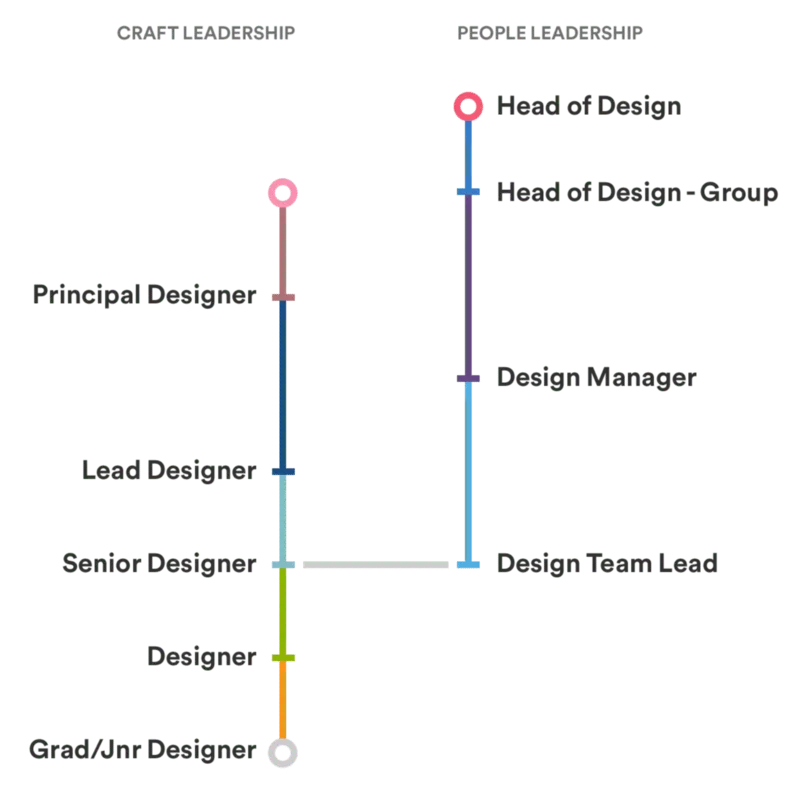
Career development paths at Atlassian Design.
To promote a sense of community and improve knowledge sharing, Atlassian also gathers together their design organization every year for Design Week. During the internal conference, teams share best practices from case studies and participate in fun activities together.
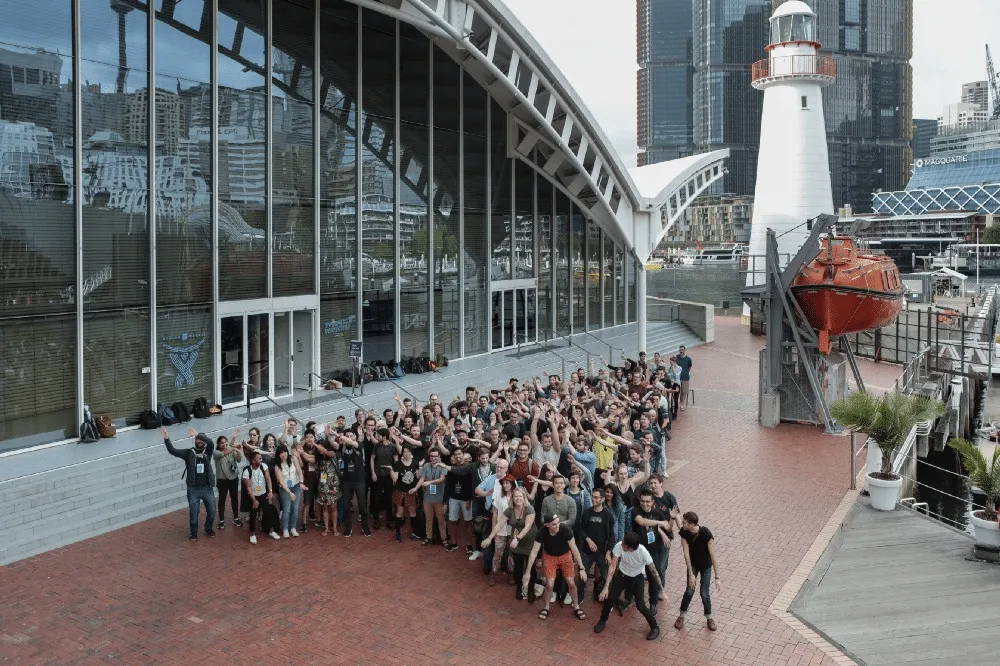
Atlassian Design Week 2017
Conclusion
Well-crafted products require good designers. To attract good designers, you need a well-designed hiring process.
Design transformation isn’t as simple as hiring hundreds of designers and calling it a day. Careful processes are required to hire and develop the right design talent without disrupting the balance of other teams.
It’s no different than designing a product: consider the end-user experience, think through the consequences of each decision, and be prepared to evolve and iterate over time.
Interested in being a designer at Atlassian? To see available positions, check out Atlassian Design Careers.


